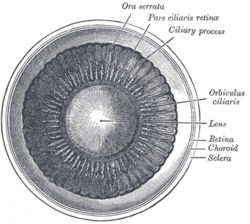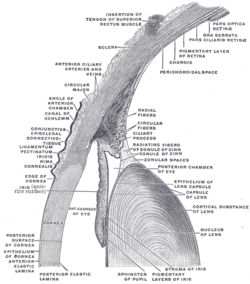Ciliary_processes
Ciliary processes
Glands in the eye which produce aqueous humor
In the anatomy of the eye, the ciliary processes are formed by the inward folding of the various layers of the choroid, viz. the choroid proper and the lamina basalis, and are received between corresponding foldings of the suspensory ligament of the lens.
This article needs additional citations for verification. (December 2008) |
This article includes a list of references, related reading, or external links, but its sources remain unclear because it lacks inline citations. (December 2008) |

